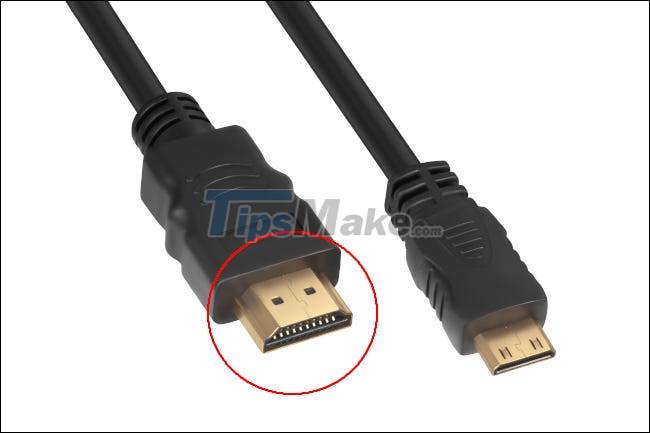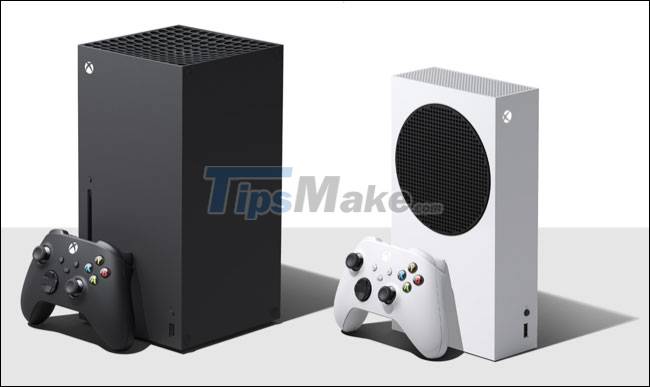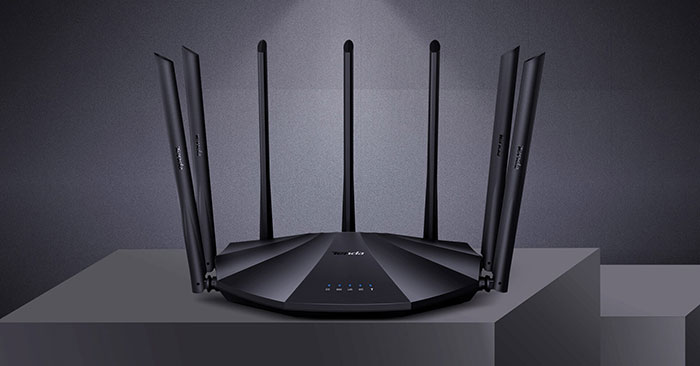Difference between HDMI, Mini HDMI and Micro HDMI
So what is the difference between standard HDMI, Mini HDMI and Micro HDMI?
What is HDMI?
To understand the different types of HDMI cables in use, you should know the basics of what HDMI is. HDMI stands for High Definition Multimedia Interface. It's a digital standard designed to transmit video and audio from a source (such as a Blu-Ray player or game console) to a monitor or recorder.

HDMI has had several versions, each new increasing bandwidth throughput to allow for higher resolutions and increased frame rates. The latest standard is HDMI 2.1, which allows for a total throughput of 48Gbps or enough bandwidth for an uncompressed 12-bit 4K HDR signal at 120Hz.
Regardless of whether you're using HDMI Type-A or a smaller variant, the standard uses 19 pins to transmit various signals, including video and audio, a clock to keep everything in sync, power 5V and even Ethernet data.
What is Mini HDMI?
Mini HDMI, also known as Type-C, is a smaller version of this digital interface. The connector measures only 10.42 x 2.42 mm and also has 19 pins, although the arrangement is slightly different from the larger Type-A connector. It is not uncommon to find HDMI cables with both Type-A and Mini HDMI (Type-C) connectors.

While larger devices like game consoles and TVs take up a lot of space, smaller devices often need to save space. This is where Mini HDMI comes in, offering all the benefits of the HDMI interface in a much smaller form.
The most common devices that use Mini HDMI are digital cameras and camcorders. Some laptops, or smaller computers like the Raspberry Pi Zero, also use the HDMI standard which has a smaller form factor.
What is Micro HDMI?
Micro HDMI, also known as Type-D, shrinks the standard interface even more. This connector is only 6.4 x 2.8 mm, but still has enough 19 pins (although the layout is different from both standard and Mini connector types). Micro HDMI is less common than the other two versions and has declined in popularity in recent years.

Some Android phones such as Motorola Droid X, HTC One VX, Samsung Galaxy Note II and LG Optimus G use these ports. All of these devices are a bit old, aren't they? Correct. Most Android phones these days use the more common USB-C connection, many of which can support HDMI output using a USB-C to HDMI adapter.
Arguably the most popular devices that still use Micro HDMI are GoPro action cameras. The GoPro Hero 4, Hero 5 Black, Hero 6 Black, and Hero 7 Black all have Micro HDMI ports, while the Hero 8 Black and Hero 9 Black action cameras still use Micro HDMI with Media Mod (sold separately).
HDMI has always existed (until now)
The advantage of HDMI lies in the fact that each new version maintains compatibility with previous versions. You can use the HDMI connection from your old laptop or Xbox 360 console and the display should be no problem on a brand new 8K TV.
Older analog standards often require intermediates that convert SCART, component, S-video, or analog connections to digital HDMI. Without such an interface, it would be difficult to display old consoles and computers on modern TVs.

The latest HDMI 2.1 standard is relatively new. The first source devices like the Xbox Series X, PlayStation 5, and NVIDIA's 30-Series graphics cards just came out in 2020. Standards are constantly evolving, and HDMI 2.1 offers just enough bandwidth for the foreseeable future.
HDMI 2.1 supports 10K streams at 120Hz with display stream compression, enhanced Audio Return Channel (eARC) for soundbars and home theater receivers, audio formats like Dolby Atmos, and more gaming features like Variable Refresh Rate (VRR).
Type-A connectors are ubiquitous and easy to use. If an HDMI replacement is needed, USB-C will likely be a top contender. HDMI over USB-C is already possible, although HDCP 2.2 support is currently limited to HDMI.

The only other technology that can prevent HDMI is some kind of wireless standard. While wireless display technology is useful for mobile devices (technologies like AirPlay have enabled them), the reality is that they are susceptible to interference. So it doesn't make sense for static devices like game consoles or Blu-Ray players to use a wireless connection, even if it eliminates the clutter of cables.
Buy and use the right HDMI cable
If you need to use a Mini or Micro HDMI cable (Type-C and Type-D), your device may already come with one. Since most of these devices are limited to 4K or less (even at 60Hz), you don't need to worry about HDMI 2.1 in these cases.
If you're looking to purchase an HDMI 2.1 cable, you can use the mobile app to verify that the cable is certified. New consoles like Xbox Series X and PlayStation 5 will come with HDMI 2.1 cables, and replacing them with aftermarket alternatives won't result in an improvement in picture quality.
In fact, the article recommends avoiding 'premium' HDMI cables altogether. While these promise outstanding durability and high data throughput, they are in fact no better than cheap cables.
You should read it
May be interested
- Powerline adapter or mesh WiFi is the best choice for your home?
 if you can't connect to the internet in some areas of your home, there are several ways to work around the problem. two of the most popular options are powerline adapters and mesh wifi.
if you can't connect to the internet in some areas of your home, there are several ways to work around the problem. two of the most popular options are powerline adapters and mesh wifi. - Netgear router not working? Here's how to fix it!
 netgear router not working? whether it's not connecting to the internet or not showing up in your wifi settings at all, here's how to get your router working again.
netgear router not working? whether it's not connecting to the internet or not showing up in your wifi settings at all, here's how to get your router working again. - Asus RT-AC68U Review: Versatile Dual Band Mesh WiFi Router
 if you're hoping to upgrade from a single-band router or are simply interested in upgrading to a leader in the latest in router technology, consider the asus rt-ac68u.
if you're hoping to upgrade from a single-band router or are simply interested in upgrading to a leader in the latest in router technology, consider the asus rt-ac68u. - Difference between Access Point and Router
 surely, you have heard many people talking about 'routers' and 'access point' devices. so are these two concepts referring to the same thing? the answer is of course no!
surely, you have heard many people talking about 'routers' and 'access point' devices. so are these two concepts referring to the same thing? the answer is of course no! - Linksys E1700 review: Basic router with a simple design
 the linksys e1700 n300 is a basic router with a simple design. the shape of the router is a bit odd. it's a large, flat rectangle, two external detachable antennas that protrude from the back.
the linksys e1700 n300 is a basic router with a simple design. the shape of the router is a bit odd. it's a large, flat rectangle, two external detachable antennas that protrude from the back. - Tenda AC23 review: dual band Gigabit WiFi router
 tenda recently launched the ac23 ac2100 dual-band wifi router, which it says will deliver a great user experience. let's review this product to see if it is good for a high-speed internet connection.
tenda recently launched the ac23 ac2100 dual-band wifi router, which it says will deliver a great user experience. let's review this product to see if it is good for a high-speed internet connection.






 What is HDMI? What is HDMI used for?
What is HDMI? What is HDMI used for? The 7 best mini PCs for every budget
The 7 best mini PCs for every budget Officially released HDMI 2.1 standard that supports 10K video and Dynamic HDR
Officially released HDMI 2.1 standard that supports 10K video and Dynamic HDR Experience micro phone 2 sim 2 wave, connect to smartphones
Experience micro phone 2 sim 2 wave, connect to smartphones Distinguishing HDMI 2.1, 2.0 and 1.4
Distinguishing HDMI 2.1, 2.0 and 1.4